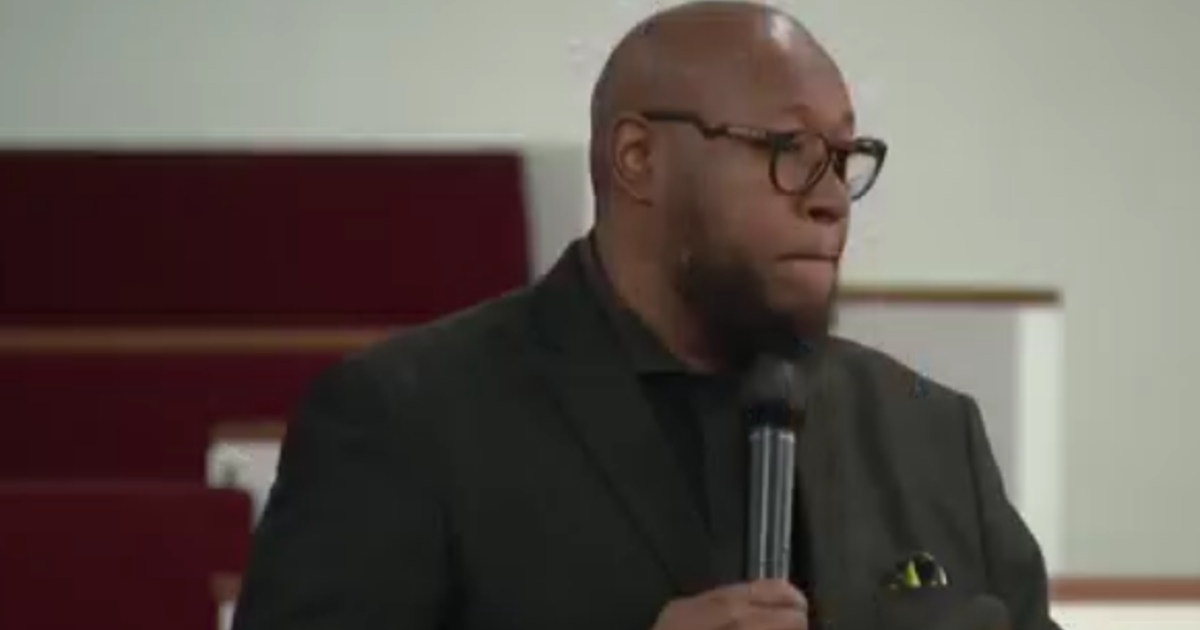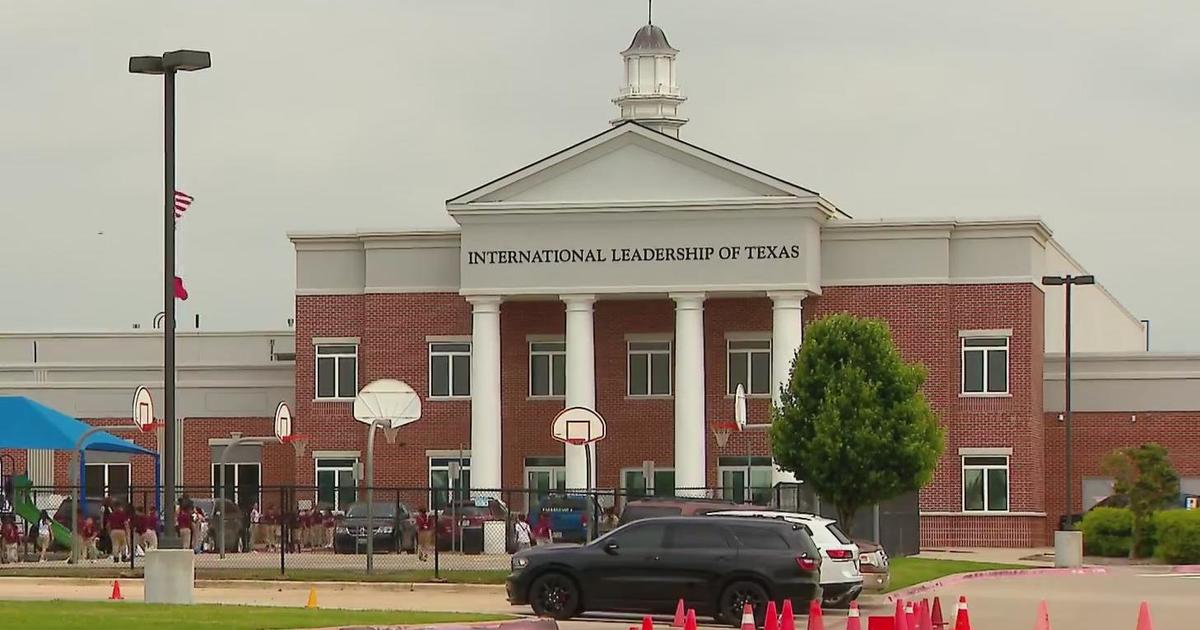Texas man who shot, killed armed gunman discusses recent mass shootings
**Puedes encontrar la versión en español al final del artículo**
WHITE SETTLEMENT, Texas (CBSDFW.COM) — In our search for answers after the Uvalde school shooting, CBS 11 wondered how often someone else with a gun can stop a mass shooting. But it's a question that doesn't come with an easy answer.
It happened here in 2019 at the West Freeway Church of Christ in White Settlement. It was the first service after Christmas when half way through communion prayer, a lone gunman attending the service opened fire.
Officials said the gunman stood up, spoke briefly to church deacon Tony Wallace and then shot him. Seconds later, he turned and shot Richard White, an armed security team member.
Both men were killed.
Amid the chaos, worshipper and head of the volunteer security force Jack Wilson fired one shot from the back of the sanctuary and killed the shooter.
To this day, Wilson still grieves the loss of his two friends, but is grateful to have saved so many other lives.
"It is a servant's position, it's not just to go out and be put in that position where you have to shoot someone," he said.
Wilson served as a sheriff in Hood County in the 1980s. He's worked for years as an arms instructor and security expert. Since the shooting, he's consulted with organizations around the country, each asking him to help set up the kind of security force and plan that he put together at his church.
"It's well in excess of probably 30 that I've worked with," Wilson said. "Different church teams, go do a church evaluation, go do an actual evaluation of the property, [see] where the issues can be."
Doug Dunbar: I'm curious your thoughts on when you saw Buffalo, and then just such a short time later, Uvalde. What is the first thing that Jack Wilson is thinking about when you see what unfolded?
Wilson: Why was there not someone there who could help stop that? In both cases.
Looking into his question, it's impossible to truly know. However, the CBS Innovation Lab data team found that very few mass shooting incidents have been resolved by someone other than law enforcement.
Data from the Advanced Law Enforcement Rapid Response Training (ALERRT) center, shows that of the 464 active shooter events documented between 2000 and 2021, 242 of those shootings ended with either the gunman leaving, dying by suicide or being physically subdued.
Only 24 times was the shooter shot by someone else who was not law enforcement.
Documented shootings that have involved good samaritans with guns have ended both good and bad.
Just last year in Olde Town Arvada, Colorado, armed good samaritan Johnny Hurley was caught on camera shooting a gunman who had just shot and killed a police officer moments earlier.
But in the seconds after Hurley killed the gunman, a responding officer mistook him for the shooter and killed him.
In the same year, in Superior, Nebraska, a fired employee returned to where he worked and began shooting.
The gunman shot three employees, killing two, before another employee managed to grab a gun in an office, return fire, and stop the shooter.
Just like Wilson did.
"It is frustrating when some people think, 'Well, nothing can happen here,'" Wilson said. "Well, as far as we've seen in Buffalo, as we've seen in Uvalde...things do happen. And when you don't prepare for things, the tragic results are what fall out of that."
He says he still has questions regarding the Uvalde gunman and his weaponry.
"I still want to know with the shooter in Uvalde—an 18-year-old working eight hours a week at a Wendy's—has the money to buy what he had in his possession," Wilson said.
It's a question many want an answer to.
The investigation into the Uvalde shooter found he had legally and recently purchased an AR-15 style rifle, 20 boxes of ammunition, and had 17 30-round magazines, all in addition to the M4 rifle and body armor he used inside the school.
As to the question of where the shooter got the money, Texas DPS has been digging into that answer.
"He had money in a joint account with his grandmother and used the debit card to make those online purchases. Several online purchases. At least six prior to, up until the day of the attack, or actually to the day of his birthday, May 16th," Texas DPS Director Steve McCraw said.
Wilson will be the first to admit that every situation is unique and that there is no single blanket solution. But having lived through and taken down an active shooter, being unarmed is not an option for him.
"People asked me how did you deal with killing somebody. I said it then, I'll still say it. I didn't kill a human being, I killed evil," he said.
------------------------------------------------------------------------------------------------------------------------------------------
WHITE SETTLEMENT, Texas (CBSDFW.COM) — En nuestra búsqueda de respuestas después del tiroteo en la escuela de Uvalde, CBS 11 se preguntó con qué frecuencia otra persona con un arma puede detener un tiroteo masivo. Pero es una pregunta que no viene con una respuesta fácil.
Sucedió aquí en 2019 en la Iglesia de Cristo de West Freeway en White Settlement. Era el primer servicio después de Navidad cuando, a la mitad de la oración de comunión, un pistolero solitario que asistía al servicio abrió fuego.
Las autoridades dijeron que el hombre armado se puso de pie, habló brevemente con el diácono de la iglesia Tony Wallace y luego le disparó. Segundos después, se volvió y le disparó a Richard White, un miembro del equipo de seguridad armado.
Ambos hombres fueron asesinados.
En medio del caos, el devoto y jefe de la fuerza de seguridad voluntaria Jack Wilson disparó un tiro desde la parte trasera del santuario y mató al tirador.
Hasta el día de hoy, Wilson todavía lamenta la pérdida de sus dos amigos, pero está agradecido de haber salvado tantas vidas.
"Es una posición de sirviente, no es solo salir y ser puesto en esa posición en la que tienes que dispararle a alguien", dijo.
Wilson se desempeñó como alguacil en el condado de Hood en la década de 1980. Ha trabajado durante años como instructor de armas y experto en seguridad. Desde el tiroteo, ha consultado con organizaciones de todo el país, cada una de las cuales le ha pedido ayuda para establecer el tipo de fuerza de seguridad y el plan que elaboró en su iglesia.
"Probablemente supere con creces los 30 con los que he trabajado", dijo Wilson. "Diferentes equipos de la iglesia, vayan a hacer una evaluación de la iglesia, vayan a hacer una evaluación real de la propiedad, [vean] dónde pueden estar los problemas".
Doug Dunbar: Tengo curiosidad por sus pensamientos sobre cuándo vio a Buffalo, y luego, poco tiempo después, a Uvalde. ¿Qué es lo primero en lo que piensa Jack Wilson cuando ve lo que sucedió?
Wilson: ¿Por qué no había alguien allí que pudiera ayudar a detener eso? En ambos casos.
Mirando su pregunta, es imposible saberlo realmente. Sin embargo, el equipo de datos del Laboratorio de innovación de CBS descubrió que muy pocos incidentes de tiroteos masivos han sido resueltos por alguien que no sea la policía.
Los datos del centro ALERRT (Advanced Law Enforcement Rapid Response Training) muestran que de los 464 eventos de disparos activos documentados entre 2000 y 2021, 242 de esos tiroteos terminaron con la salida del atacante, suicidándose o siendo sometido físicamente.
Solo 24 veces el tirador fue disparado por otra persona que no era policía.
Los tiroteos documentados que han involucrado a buenos samaritanos con armas han terminado tanto para bien como para mal.
Apenas el año pasado en Olde Town Arvada, Colorado, el buen samaritano armado Johnny Hurley fue captado por la cámara disparando a un hombre armado que acababa de disparar y matar a un oficial de policía momentos antes.
Pero en los segundos posteriores a que Hurley matara al pistolero, un oficial que respondió lo confundió con el tirador y lo mató.
En el mismo año, en Superior, Nebraska, un empleado despedido regresó a donde trabajaba y comenzó a disparar.
El hombre armado disparó a tres empleados, matando a dos, antes de que otro empleado lograra agarrar un arma en una oficina, devolver el fuego y detener al tirador.
Al igual que lo hizo Wilson.
"Es frustrante cuando algunas personas piensan: 'Bueno, aquí no puede pasar nada'", dijo Wilson. "Bueno, por lo que hemos visto en Buffalo, como hemos visto en Uvalde... las cosas suceden. Y cuando no te preparas para las cosas, los resultados trágicos son los que caen".
Dice que todavía tiene preguntas sobre el pistolero de Uvalde y su armamento.
"Todavía quiero saber con el tirador en Uvalde, un joven de 18 años que trabaja ocho horas a la semana en un Wendy's, tiene el dinero para comprar lo que tenía en su poder", dijo Wilson.
Es una pregunta a la que muchos quieren una respuesta.
La investigación sobre el tirador de Uvalde descubrió que había comprado legalmente y recientemente un rifle estilo AR-15, 20 cajas de municiones y tenía 17 cargadores de 30 rondas, además del rifle M4 y la armadura corporal que usaba dentro de la escuela.
En cuanto a la pregunta de dónde obtuvo el dinero el tirador, el DPS de Texas ha estado investigando esa respuesta.
"Tenía dinero en una cuenta conjunta con su abuela y usó la tarjeta de débito para hacer esas compras en línea. Varias compras en línea. Al menos seis antes, hasta el día del ataque, o en realidad hasta el día de su cumpleaños, mayo. 16", dijo el director de Texas DPS, Steve McCraw.
Wilson será el primero en admitir que cada situación es única y que no existe una única solución general. Pero habiendo sobrevivido y derribado a un tirador activo, estar desarmado no es una opción para él.
"La gente me preguntaba cómo lidiabas con matar a alguien. Lo dije entonces, lo seguiré diciendo. No maté a un ser humano, maté al mal", dijo.




